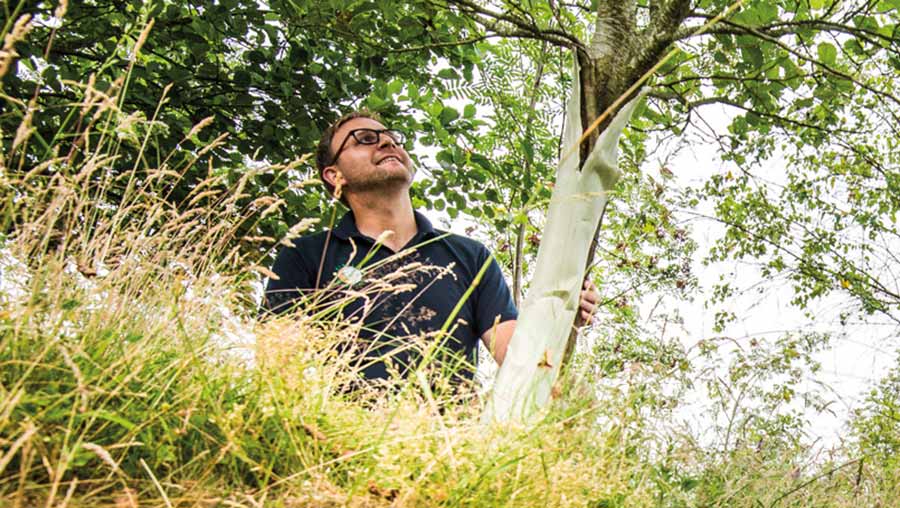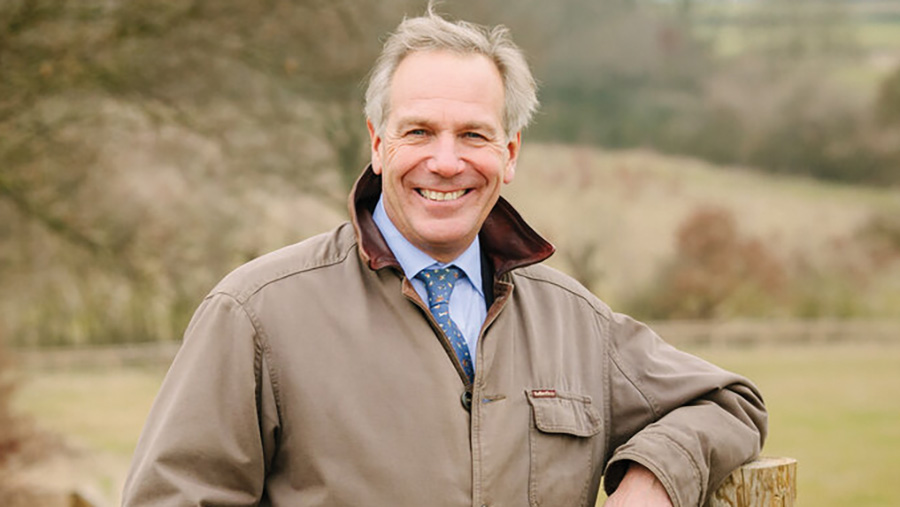Trees can earn more than wheat under new planting scheme

© Forestry Commission
Farmers are being urged to crack on with tree planting sooner rather than later, with the suggestion that grants under the new England Woodland Creation Offer (Ewco) are “as good as it’s going to get”.
The £16m scheme launched this week and Forestry Commission chairman Sir William Worsley, said it would likely form the basis of the woodland proposition under the forthcoming Environmental Land Management (ELM) scheme.
See also: 9 reasons to plant trees on your land
“This is a holding position between now and ELM in 2024, but it will be taken on,” he told Farmers Weekly. “But because we want to see planting done now, to get farmers to engage now, the likelihood is that the payment is going to be as generous now as it is ever going to be.”
Under the scheme, farmers and landowners will receive up to £8,500/ha to cover 100% of the capital cost of establishing woodland.
While this is the maximum payment, and actual rates will depend on factors such as the nature of the site being planted, the species used and the need for rabbit and deer control, Sir William was confident the money would cover the full cost.
The Ewco will also make annual maintenance payments of £200/ha for 10 years, to cover items including sapling replacement, pest management and weeding.
Sir William described this as “pretty generous” and suggested it would compare favourably to many Agricultural Holdings Act tenancy rents.
Furthermore, scheme participants could benefit from a “pallet” of additional payments, of up to £2,800/ha, for providing extra public and environmental benefits, such as public access or flood control (see panel).
Targets
The Ewco forms part of the England Trees Action Plan, announced last month, and has a target of 10,000ha of new woodland – mainly, but not exclusively native species – planted by 2024.
This compares with the action plan target of 7,000ha a year for England, and a UK government target of 30,000ha per year for the whole country.
Sir William denied the Ewco target lacked ambition, but said finding land for tree planting in England was more challenging than in, for instance, Scotland. “That is a reflection of the relative land quality, but also we live in a very crowded country, and there are lots of demands on land,” he said.
Despite this, Sir William was optimistic there would be decent farmer take-up. “As farmers become more aware of their land quality, they will find areas where tree planting actually makes the most money.”
Should the scheme be oversubscribed, Sir William said he would be asking the Treasury for more funds, taking advantage of the government’s current enthusiasm for tree planting.
He was also optimistic there would be sufficient supplies of saplings from UK nurseries, with the England Trees Action Plan providing funds to help tree nurseries raise production.
The English Woodland Creation Offer in a nutshell
What does the Ewco entail?
- 100% capital grant of up to £8,500/ha to plant trees
- Annual maintenance payment of £200/ha
- Minimum size requirement of just 1ha an application and 0.1ha a plot
- Additional contributions for providing wider public benefits
What additional contributions?
- £1,100-£2,800/ha for aiding species recovery
- £1,600/ha for planting near waterways
- £500/ha for reduced flood risk
- £2,200/ha for allowing long-term permissive access
- £500/ha for planting close to settlements
- £400/ha where planting helps improve water quality
Reaction
Mark Bridgeman, president of the Country Land & Business Association (CLA) said landowners would be well advised to take a look at the scheme.
“Payments for woodland creation under the Ewco are significantly better than previous schemes and the minimum application area has been reduced to 1ha, which should increase interest in tree planting,” he said.
“Higher standard payments, with optional supplements for biodiversity, flood mitigation or access provision, makes woodland creation under the Ewco a more attractive option than before.”
NFU deputy president Stuart Roberts said planting trees and managing bigger hedgerows was a key part of the NFU’s “net zero” plan, though care needed to be taken to ensure it worked alongside productive farming.
“It’s great that this scheme will begin to recognise and reward those who are planting trees for the multitude of benefits trees in all forms can provide,” he said. “It’s also really encouraging to see the management of trees being funded.”
Why plant trees?

© Forestry Commission
Planting trees offers farmers a chance to make better use of the less productive parts of their farm, leading to higher margins and a more stable income.
“We need to use our productive farmland to grow good crops, but I know from my own farm there are areas where we can earn more money from growing trees than growing wheat,” said Sir William.
The UK is also the world’s second largest importer of wood, shipping in 90% of requirements, so there should be a ready market for farm-grown timber.
And then there are the environmental benefits of woodland, such as landscape improvement, habitat creation and carbon sequestration.
Participants in the Ewco will also be able to register under the Woodland Carbon Code, which may enable them to sell woodland carbon credits to private buyers in the future.
